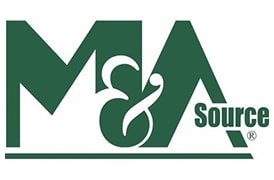
“We see tremendous potential . . . for owners, investors, and the economy as a whole.”
– Bob McCormack, Murphy McCormack Capital Advisors
As a private equity investor group, subordinate debt is a challenge to the efficiency of any model— whether that model involves investing in equity, debt or assets. That is, unless you know how to utilize Article 9 of the Uniform Commercial Code (UCC).
Subordinate creditors create obstacles to closing, they pose risk, and they drain time and money, negatively impacting ROI. Moreover, when a distressed situation involves a complex subordinate debt schedule, the prospect of often futile short sale attempts can be prohibitive. Even for investors willing to navigate the waters, the associated costs and inefficiencies impose a premium on private valuation, thus restricting “viable” deal flow.
However, a streamlined restructuring prior to or through your acquisition (facilitated under Article 9 of the UCC) will fully resolve all subordinate debt, while preserving the full continuity and value of business operations—delivering a pristine, debt-free enterprise within 45-60 days. For purchasers seeking add-ons, ongoing concern value becomes available at liquidated asset cost. For the private equity professional, this is a game-changer.
By eliminating subordinate creditors pre-acquisition, private equity investors can avoid complex cramdowns or nearly impossible short sales while also completely sidestepping the time, risk and costs associated with walking a target through Chapter 11 or a 363 sale.
The strategic use of Article 9 is centered around a controlled short sale that is fast and frictionless because it requires the consent of only the senior creditor.
Incentives for All Parties in the Transaction
Most know that Article 9 of the Uniform Commercial Code protects the interests of the first position, secured creditors by allowing them to sell their collateral to prospective purchasers, free and clear of liens and encumbrances. What every PE professional should also know is that assets liquidated through a strategic Article 9 transaction can be sold into a new purchasing entity — thus preserving core enterprise value, the continuity of operations and jobs.
The strategic Article 9 sale not only returns maximum value to secured creditors (rendering the transaction frictionless, as it is based on their agreed-upon third-party asset valuation), but it also divorces all subordinate creditors from the operations. There is simply no more rational or efficient means of extracting core business value in the distressed space.
For your private equity investment strategy, the benefits are tremendous.
Win #1: Attractive Cost
You will enter at the far more attractive cost of the liquidation value of the assets rather than the note.
Win #2: Path to Exit
You will scale your successful LOI deal flow by incentivizing sellers with a path to a successful exit when they would otherwise be left facing a string of personal guarantees and bankruptcy and, therefore, have little incentive to close.
How?
The delta between liquidated asset cost and your own enterprise valuation gives you room to allocate performance-based incentives back to your target seller. So, you not only enter attractively but can incentivize sellers with a path to resolving PGs and avoiding bankruptcy.
Win #3: Reduced Exposure
Because your upfront costs are far lower, and the balance of seller compensation is performance-based, your portfolio will benefit from reduced exposure to those acquisitions that fail or underperform.
Win #4: Control
When your strategy involves Chapter 11 or 363 sales, you know how little control you have over the process. It’s lengthy, costly and comes with the risk of being outbid after months of work. Now you can achieve the same positive result in weeks, with full control, through the application of the Article 9 short sale.
Win #5: Time is Money
When your acquisition posture is strengthened through the resolution of subordinate debt, you deploy capital more quickly and more efficiently, significantly increasing ROI.
Win #6: Leverage
When your acquisition is debt-free prior to or through the transaction, the entire asset base is available for you to scale your leveraged buyout model.
In conclusion, the Article 9 strategic short sale is simply the most efficient means of extracting and transferring business value in distressed situations. For the private equity professional, this means lowering the cost of entry, minimizing exposure to failed acquisitions, creating exit incentives for sellers, and increasing portfolio ROI, thereby transforming distress into opportunity.
Because overleveraged situations can be reorganized with a streamlined Article 9 transaction, you can reevaluate target opportunities, rather than pass on them. Investors can also take advantage of the “delta” between asset valuation and enterprise value created through restructuring.
Second Wind has conducted 1000s of restructurings over the past ten years. Find out how a strategic Alliance with Second Wind can benefit your model.
Contact us today to start the conversation!
P: 800.594.7473
E: alliance@
Sean McCarthy
Alliances Development
Second Wind Consultants
136 West Street, Northampton, MA 01060

